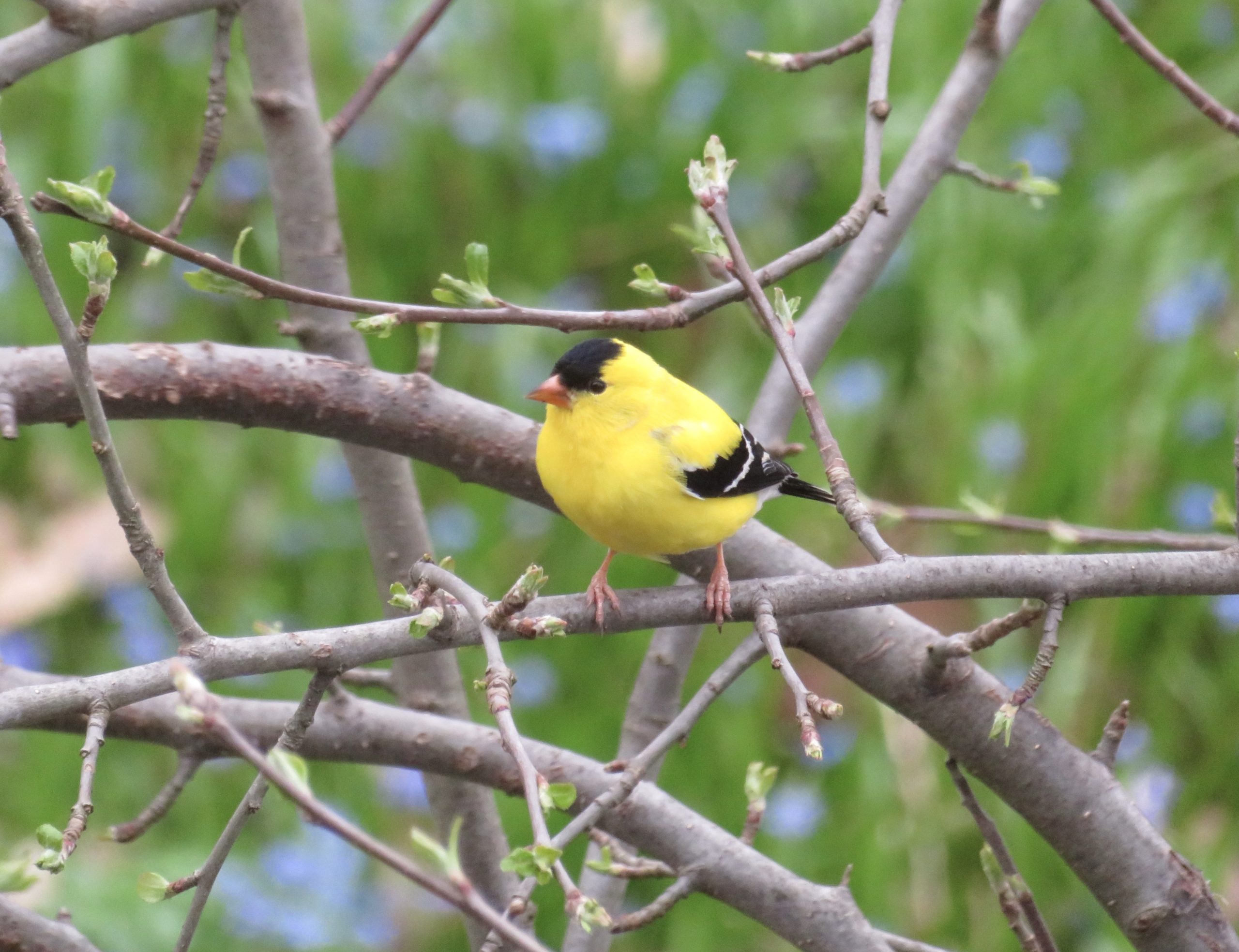It’s the day after Earth Day. Snow ⎼ big, slow moving white flakes are falling onto red-winged black birds, blue jays, gold finches, robins and cardinals. And the snow weighs down the flowers in the yard breaking some of the stalks ⎼ yellow daffodils, blue squill, lavender crocus, hellebores ⎼ and it buries the new grass.
The bird calls grow stronger. Are they telling each other the location of seeds, warning of other birds or animals, or calling for a mate? Or maybe proclaiming “this branch is mine,” or the joy of eating and flying between snowflakes? They probably don’t yearn for any moment other than this one.
The trees, apple, cherry, and oak, seem unmoved, unbent by the cold or the snow load or even by the wind.
My wife and two of our cats sit with me on the bed inside the second-floor bedroom. The cats, not my wife and I, clean each other. Then they sleep. They wrap themselves so softly around each other, one’s head resting on the other’s belly, you could hardly tell where one ends and the other begins. Even after almost twelve years, I feel amazed by how these semi-wild creatures are so comfortable with each other and want to be with me.
And I am amazed, no, in awe maybe, joyous, that my wife is here with me. Despite all the craziness in much of the human world these days, we can create moments like this one. In between caring for our families, concern for the future or for our health, or shortages of supplies, we can sit with our cats, watch the snow fall, and listen for bird calls. We can cuddle, even without physically touching, just by giving to each other what the other most needs, giving support, acceptance, and warmth. It’s clear that she feels this moment strongly, like I do, but in her own unique way. She does a puzzle; I puzzle with these words.
In her book Evidence, Mary Oliver says:
This world is not just a little thrill for the eyes.
…It’s giving until the giving feels like receiving
Maybe that’s the key. To see that the world is not just something we observe at a distance but is as close as our own pulse. It includes so much more than the pandemic and political chaos. It includes not only the birds and flowers, cats and all of us people, not just the snow and the cold, but more than we know and all that we imagine. It shows us that giving deeply can be the most meaningful gift we give ourselves….
To read the whole piece, go to The Good Men Project.


